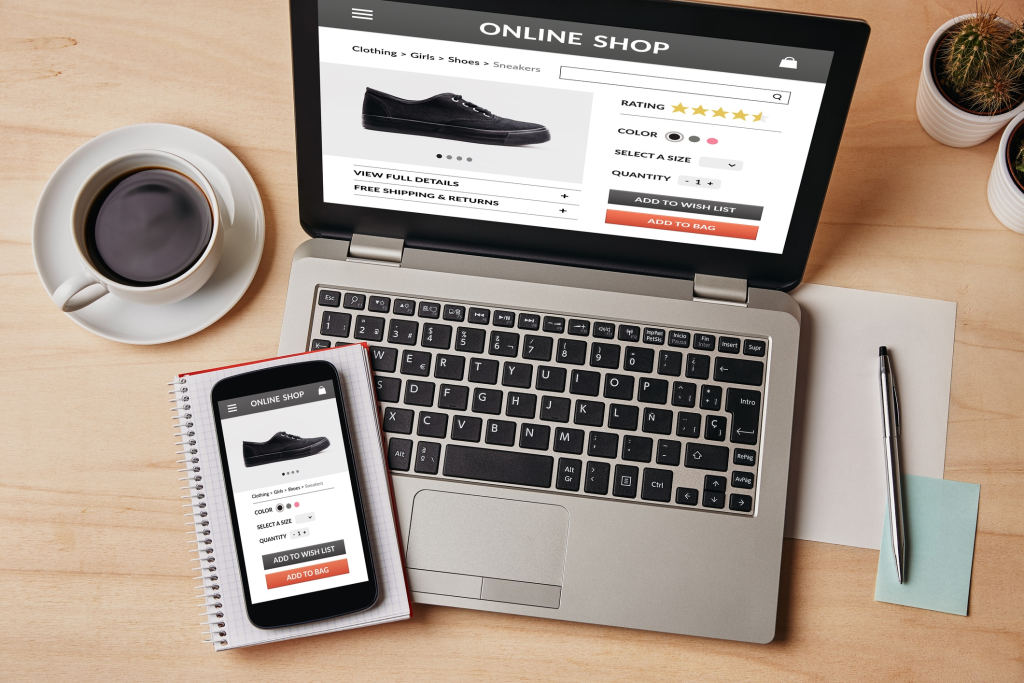In 2025, the e – commerce landscape continues to expand, presenting vast opportunities for entrepreneurs. With the right strategies and a clear roadmap, starting your e – commerce business can be a rewarding journey. Here is a comprehensive, step – by – step guide to help you get started.

I. Market Research and Product Selection
A. In – Depth Market Research
- Identify Your Niche
Begin by identifying a niche market. Instead of targeting a broad audience, focus on a specific group with unique needs. For example, if you’re interested in the fitness industry, you could target vegan fitness enthusiasts. Research their preferences, such as plant – based protein supplements, cruelty – free workout gear, and vegan – friendly fitness apps. This targeted approach helps you stand out in a crowded market.
- Analyze Industry Trends
Stay updated on the latest e – commerce trends. In 2025, trends like sustainable products, augmented reality (AR) shopping experiences, and voice – activated shopping are on the rise. If you plan to sell fashion items, consider offering sustainable fashion lines. You can also explore integrating AR technology on your website, allowing customers to virtually try on clothes before buying.
B. Select the Right Products
- Evaluate Product Viability
Look for products with high demand and reasonable competition. Tools like Google Trends can help you assess the popularity of a product over time. For instance, if you’re considering selling smart home devices, check Google Trends to see if the interest in these products is growing or declining. Also, analyze the competition to ensure you can offer something unique.
- Consider Profit Margins
Calculate the profit margins for your potential products. Factor in the cost of goods, shipping, marketing, and any other expenses. If you’re importing products from overseas, consider the cost of import duties and taxes. For example, if a product costs 5 to ship, and you plan to sell it for 10, but you need to ensure this is sustainable after covering all other costs.
II. Business Planning and Brand Building
A. Create a Solid Business Plan
- Define Your Business Goals
Set clear, measurable goals for your e – commerce business. Your short – term goals could include launching your website within the next three months and getting 100 initial customers in the first month. Long – term goals might be to achieve a certain revenue target within a year or expand your product line. For example, you could aim to reach $100,000 in annual revenue within the first two years.
- Develop a Marketing Strategy
Outline your marketing plan. In 2025, a multi – channel approach is essential. This includes social media marketing, search engine optimization (SEO), and influencer partnerships. If you’re selling beauty products, collaborate with beauty influencers on platforms like Instagram and YouTube. Use SEO techniques to rank higher in search engine results for keywords related to your products, such as “organic skincare products” or “cruelty – free makeup.”
B. Build a Strong Brand
- Choose a Memorable Business Name
Select a business name that is easy to remember, pronounce, and relevant to your products or brand values. For a sustainable fashion brand, a name like “EcoWear” or “GreenThreads” can convey the brand’s focus on environmental friendliness. Check the availability of the domain name and social media handles for your chosen name.
- Design a Compelling Brand Identity
Create a logo, color scheme, and brand voice that resonate with your target audience. A luxury e – commerce brand might use elegant colors like gold and black in its logo and packaging, and have a sophisticated brand voice. Use consistent branding across your website, social media, and product packaging to build brand recognition.
III. Setting Up Your Online Store
A. Select an E – commerce Platform
- Evaluate Platform Features
There are various e – commerce platforms available, such as Shopify, WooCommerce (for WordPress), and Magento. Consider features like ease of use, mobile – friendliness, payment gateways, and scalability. Shopify is user – friendly and suitable for beginners, with a wide range of apps for adding functionality. If you plan to sell globally, ensure the platform supports multiple currencies and languages.
- Cost – Effectiveness
Compare the costs of different platforms. Some charge a monthly subscription fee, while others may have additional transaction fees. For a small – scale e – commerce business, a platform with a lower initial cost like WooCommerce (which is free to install on WordPress, but you may need to pay for hosting and plugins) might be a good option. However, if you need advanced features and high – level support, a more expensive platform like Magento could be worth the investment.

B. Build and Optimize Your Store
- Create User – Friendly Product Pages
Your product pages should have clear product descriptions, high – quality images, and customer reviews. For a tech product, include detailed specifications, usage instructions, and customer testimonials. Use high – resolution images from multiple angles to give customers a good view of the product.
- Optimize Your Mobile Stores and SEO
Ensure your store is mobile – optimized, as a significant number of online shoppers use mobile devices. Test your website on different mobile devices to ensure a seamless experience. Also, optimize your website for SEO. Use relevant keywords in your product titles, descriptions, and meta – tags. For example, if you’re selling running shoes, use keywords like “best running shoes for women,” “lightweight running shoes,” etc.
IV. Logistics and Customer Service
A. Establish Shipping and Fulfillment
- Choose Shipping Partners
Research and partner with reliable shipping companies. Consider factors like shipping rates, delivery times, and international shipping capabilities. If you’re selling products globally, you may need to work with multiple shipping partners to ensure cost – effective and timely delivery. For example, DHL is known for its fast international shipping, while USPS may be more cost – effective for domestic shipments in the United States.
- Manage Inventory Effectively
Implement an inventory management system, especially if you’re dealing with physical products. You can use inventory management software to track stock levels, set reorder points, and manage product variations. For an e – commerce store selling clothing, you need to track inventory for different sizes, colors, and styles.
B. Provide Exceptional Customer Service
- Set Up Multiple Communication Channels
Offer multiple ways for customers to contact you, such as email, live chat, and social media. A customer may have a question about a product, an issue with an order, or need help with the checkout process. Provide quick and helpful responses to build customer trust. For example, if a customer emails you about a damaged product, respond within 24 hours and offer a replacement or refund.
- Collect and Act on Customer Feedback
Regularly collect customer feedback through surveys, reviews, and direct communication. Use this feedback to improve your products, services, and overall customer experience. If many customers complain about the length of time it takes to receive their orders, look for ways to optimize your shipping and fulfillment process.
V. Launch and Growth
A. Prepare for Launch
- Test Your Store Thoroughly
Before launching, conduct thorough testing of your website. Check for any broken links, payment gateway issues, and compatibility problems. Test the checkout process to ensure it’s smooth and error – free. You can also ask friends, family, or beta testers to test your store and provide feedback.
- Plan a Launch Promotion
Create a launch promotion to attract initial customers. This could include offering discounts, free shipping, or exclusive offers. For example, offer a 20% discount on all products for the first week after launch or provide free shipping for orders above a certain amount.
B. Monitor and Grow Your Business
- Track Key Metrics
Once your store is live, track key metrics like website traffic, conversion rates, customer acquisition costs, and customer lifetime value. Use analytics tools like Google Analytics to gain insights into your business performance. If you notice that your conversion rate is low, analyze the user journey on your website to identify potential bottlenecks.
- Continuous Innovation and Adaptation
The e – commerce landscape is constantly evolving. Stay updated on new technologies, trends, and customer preferences. For example, if a new social media platform becomes popular, consider integrating it into your marketing strategy. Continuously innovate your products, services, and customer experience to stay competitive.

In conclusion, starting an e – commerce business in 2025 requires careful planning, market research, and a focus on customer satisfaction. By following these steps, you can lay a solid foundation for your e – commerce venture and work towards achieving long – term success.




